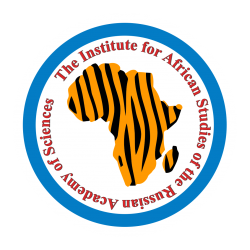Author:
Abstract:
The paper discusses possible ways to overcome one of the most relevant global problems – poverty in the developing countries. The study is based on a component analysis of the Human Development Index as a quantitative indicator of living standards for the three poorest countries in Sub–Saharan Africa – Burkina Faso, Ghana and Cote d’Ivoire – with close economic, geographical and diplomatic ties. The standard of living in each of the three countries and its dependence on four groups of the most important factors (export and import levels, net current transfers from abroad, grants from the International Development Association etc.) are analyzed. The human development index is used in the study as an indicator that most fully reflects the actual situation in the state in terms of living conditions of the population and opportunities for development available to them.
The analysis carried out in the article made it possible to reveal the strength and direction of the relationship between the standard of living in each of the countries (HDI) and the factors identified earlier. Particular interest in the article is given to the description and interpretation of the results, which at first glance seem paradoxical and impossible, but upon a more detailed examination acquire a certain meaning and high significance. Recommendations are given to improve the situation in each of the listed countries, taking into account their economic and social characteristics, problems and prospects. Particular attention is paid to identifying individual strategies that will allow each of the countries to qualitatively increase the standard of living of the population and will help accelerate the development of the national economy.
Keywords:
standard of living, poverty, human development index
DOI:
10.31132/2412-5717-2021-54-1-121-134
References:
1. Fact sheet: The International Development Association (IDA). The World Bank. https://www.vsemirnyjbank.org/ru/news/factsheet/2019/12/13/fact-sheet-the-international-development-association-ida (accessed 12.01.2021)
2. Gribanova V.V. Obrazovanie i politika v Afrike (Education and politics in Africa). Uchenyye zapiski Instituta Afriki RAN. Moscow, 2020. №1 (50). р. 71–81. DOI: 10.31132/2412-5717-2020-50-1-71-81.
3. Matsenko I.B. Trudovoi potentsial v Afrike: sostoyanie i perspektivy razvitiya (Labour potential in Africa: the state and development prospects). Uchenyye zapiski Instituta Afriki RAN. Moscow, 2019. №3 (48). р. 18–29. DOI: 10.31132/2412-5717-2019-48-3-18-29.
4. Morozkina A. Ofitsialnaya pomoshch razvitiyu: tendentsii poslednego desyatiletiya (Official development aid: trends of the last decade). Mirovaya ekonomika i mezhdunarodnye otnosheniya. Moscow, W. 2019. t. 63. № 9. p. 86–92. DOI: 10.20542/0131-2227-2019-63-9-86-92.
5. Ndzha Amuen Zhoselen Sandra. Osobennosti pryamykh inostrannykh investitsii v Kot-d’Ivuar (The specifics of foreign direct investment in Ivory Coast). Problemy ekonomiki i yuridicheskoi praktiki. Moscow, 2017. №1. p. 19–21.
6. Podbiralina G.V., Aziagba D.Ch. Faktory ekonomicheskogo rosta stran Afriki k yugu ot Sakhary: sovremennye tendentsii (Factors of economic growth in Sub–Saharan Africa: current trends). Kontury globalnykh transformatsii: politika, ekonomika, pravo. Moscow, 2018. v. 11. № 5. p. 38–54. DOI: 10.23932/2542-0240-2018-11-5-38-54
7. Selim Jahan. Human Development Indices and Indicators. Statistical. United Nations Development Programme. 2018.
8. Zavgorodnii A.F., Prikhodko D.V. Otsenka investitsionnoi privlekatelnosti stran tsentralnoi i zapadnoi Afriki (Assessment of investment attractiveness of the countries of Central and West Africa). Problemy sovremennoi ekonomiki. St Petersburg, 2018. №3 (75). p. 228–231.
